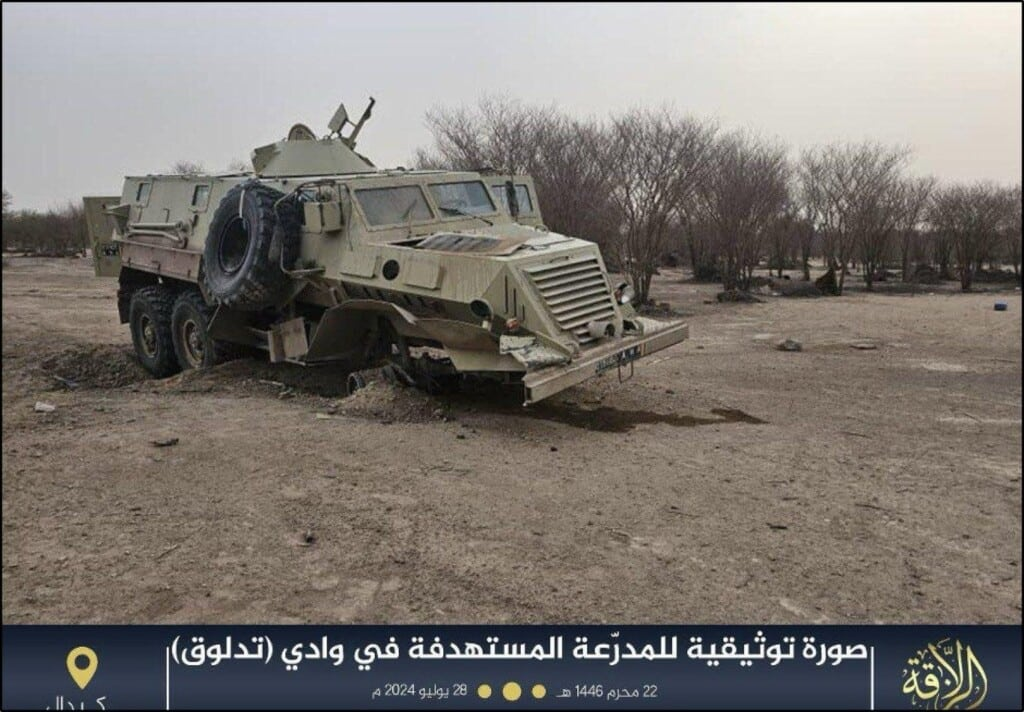Over the weekend, fierce fighting between Tuareg rebels and the Malian military, backed by mercenaries from Russia’s Wagner Group, was reported in the extreme north of Mali. The Russian mercenaries suffered dozens of casualties—the group’s largest loss to date inside Africa.
Both the Tuareg groups and Al Qaeda’s Group for Support of Islam and Muslims (JNIM) are claiming victory individually as each released propaganda showing killed and captured Russians and destroyed and captured Russian equipment. While the two groups are engaged in a propaganda spat, it’s unlikely they did not coordinate in the battles against the Russians.
Beginning last week, the Malian Army and its Wagner Group allies announced recapturing some areas from Tuareg rebels. Shortly thereafter, the joint force fell under attack near the town of Tinzaouaten in Mali’s extreme north from factions of the Permanent Strategic Framework for Peace, Security, and Development (CSP-PSD), a coalition of various armed groups, mainly ethnically Tuareg, in northern Mali.
Originally, CSP factions included those both against and supportive of the government in Bamako. However, following the departure of some factions, it has since been dominated by those fighting to create Azawad, a proposed separatist state comprising Mali’s northern half. Some CSP factions, particularly the High Council for the Unity of Azawad (HCUA), also have long-documented ties with Al Qaeda operatives in the region.
Over the following several days, the two sides clashed continually, with both belligerents claiming to have repulsed the other. During the weekend, however, the tide began turning in favor of the Tuareg factions, notably after they prevented air support from reaching battered Malian and Russian troops.
On Saturday, July 27, the Malian and Russian forces faced a major defeat as many vehicles were destroyed, leading to the deaths of dozens of soldiers, primarily from Russia’s Wagner Group. Videos posted online show the corpses of many Russian fighters, while others document the capture of many more Russians alive. The Malian Army claims to have lost only two soldiers, though the tally is likely much higher. CSP, which claims that seven of its fighters were killed, was quick to claim victory.
Wagner sources have confirmed a high death toll among its forces, with some of its affiliated Telegram channels stating that as many as 80 Wagner troops were killed and another 15 captured.
The dead reportedly include the administrator of GreyZone, a notorious Wagner Telegram channel. Unverified reports also suggest that Anton Yelizarov, a Wagner commander who also fought in Ukraine, was also killed, though it remains wholly unconfirmed.
If it is true that Wagner lost at least 80 soldiers in this battle, it would mark the group’s most significant defeat on the African continent to date.
CSP was not alone in fighting the joint Malian-Russian patrol. JNIM, Al Qaeda’s West African branch, says it too was involved, launching its own ambush against retreating Russian forces as they scrambled away from CSP positions.
JNIM’s statement does not state it fought in the same battle as CSP but as part of a separate confrontation with the forces. The group also claims to have killed at least 50 Wagner troops, which, if true, would account for the bulk of Wagner’s losses. CSP has disputed this number, however, suggesting that its men instead killed most of the Russians.
Photos and videos released by JNIM and its supporters also display killed Malian and Russian soldiers and show the jihadists clashing with the soldiers, destroying armored vehicles, and capturing weapons and equipment. The CSP likely inflicted the most damage, however, as photos and videos released by its men depict more dead and captured Russians, as well as more captured equipment.
CSP has denied any cooperation with JNIM in these battles. Though CSP has many reasons to officially deny any such coordination, it seems likely that the two sides deconflicted with each other, at the very least, to avoid clashing. At the maximum, the two communicated to drive the retreating Russians into JNIM’s ambush.
Several CSP factions, including the aforementioned HCUA, have long had strong organizational and familial ties with JNIM’s factions in Mali’s northern Kidal Region. HCUA was formed as a splinter from the former Ansar Dine, one of JNIM’s constituent groups, which JNIM’s current emir, Iyad Ag Ghaly, founded.
Others, including the National Movement for the Liberation of Azawad (MNLA), are openly more antagonistic towards JNIM, as JNIM’s constituent groups previously fought MNLA in 2012 for control over northern Mali.
Factions from the CSP and JNIM also clashed closer to central Mali earlier this year, but the JNIM and other CSP factions still enjoy closer ties in Kidal. This relationship was reinforced by Alghabass Ag Intallah, the leader of HCUA, calling for the CSP to agree to a non-aggression pact with JNIM just a month after that clash.
None of these ties mean the two groups are intrinsically one and the same, as both fight for different causes and ideologies. However, the situation also does not mean they cannot cooperate against what each considers the ‘bigger enemy’—Mali and its Wagner allies. The arrangement benefits both groups, and Al Qaeda specifically permits a ‘big tent’ approach that allows cooperation with non-jihadists when it benefits its goals.

